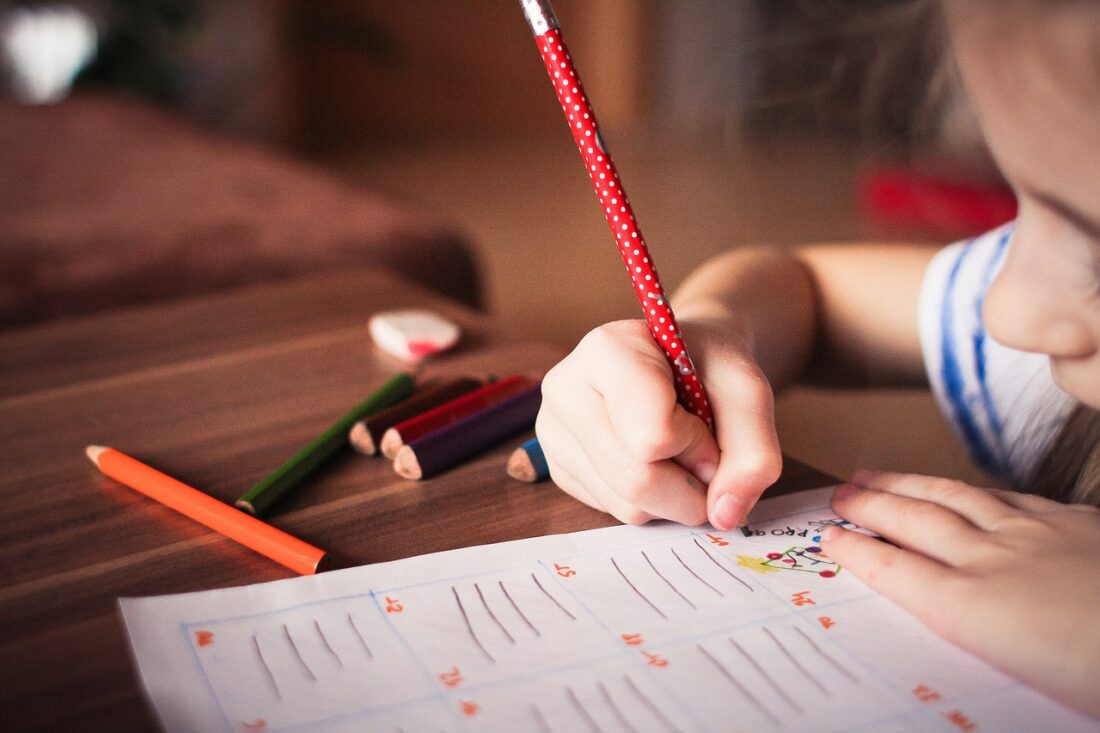Fun and Engaging Strategies for Teaching Early Literacy

Table of Contents.
1. Introduction to Early Literacy
2. The Importance of Storytelling
3. Interactive Reading Activities
4. Incorporating Technology in Literacy
5. Creative Writing Exercises for Kids
6. Benefits of Multisensory Learning
7. Encouraging Parental Involvement
8. Resources for Teachers and Parents
9. Integrating Art with Literacy
10. Utilizing Outdoor Learning
11. Storytelling Through Dance and Movement
Introduction to Early Literacy
Early literacy marks a critical phase in children’s educational development, embodying skills essential for proficient reading and writing. It taps into the foundational stages, where children learn to identify letters, understand sounds, and begin recognizing words. As they advance, these skills expand into richer vocabulary and more potent comprehension abilities, forming the basis for all future academic pursuits. These books are carefully structured to align with the sounds children learn, fostering a sense of achievement as they decode and read fluently, encouraging a lifelong love for reading and learning. This foundational literacy lays the groundwork for more complex literacy and writing skills they will encounter in school. Children equipped with these skills are better prepared for the challenges of formal education, empowering them with confidence and enthusiasm.
The Importance of Storytelling
Storytelling is one of humanity’s oldest art forms and is crucial to literacy education. Resources like phonics-based decodable books are instrumental, allowing children to practice reading skills with texts that match their phonetic knowledge. It enables children to engage with language in a lively, meaningful way, enhancing their listening skills and cultural awareness. Through storytelling, children encounter various story arcs, character developments, and moral lessons, all integral to linguistic development and literacy. Incorporating tools such as animations, props, and storytelling apps can make stories more vivid and interactive. These tools transform storytelling from a passive activity into an engaging process, encouraging children to participate actively, ask questions, and use their creativity to imagine different scenarios. This deepens their understanding and provides word-rich environments that contribute to vocabulary growth. By learning to articulate narratives, children also improve their verbal communication skills, making expressing their ideas and interpretations easier.
Interactive Reading Activities
Interactive reading activities revolutionize the way children engage with texts, transforming reading from a passive to an active pursuit. Techniques such as using voice modulation during read-aloud or incorporating dramatic gestures can make the stories more engaging. Other activities include using puppets to enact scenes from a book, encouraging children to predict what happens next, or even creating spin-off stories from the main plot. These methods are pivotal in keeping young readers enthralled and stimulating their imagination. These techniques help maintain focus and enhance comprehension skills for children who are more active readers. Library programs often model these activities effectively, offering a collaborative learning context that promotes shared reading experiences and peer learning. Integrating these activities into the classroom or home creates a supportive environment that fosters a love for reading and writing.
Incorporating Technology in Literacy
Technology is an innovative ally in literacy education, offering an expansive range of tools to cater to different learning styles and preferences. Educational apps feature interactive games that teach phonics, spelling, and reading comprehension, making learning highly engaging and adaptable to individual needs. Audiobooks can also play a significant role by exposing children to fluent reading and diverse voices, thus enhancing their listening skills. Tablets and computers can support reading through features like read-aloud settings, adjustable text sizes, and interactive dictionary functions, promoting independent learning. However, it’s essential to integrate these tools mindfully, ensuring they complement traditional learning rather than overshadow them. Studies, such as those documented in educational reports, highlight the importance of balancing technology use to maximize its benefits without diminishing the personal, human aspects of teaching. When combined judiciously with traditional methodologies, technology can deepen engagement and multiply the educational benefits for learners.
Creative Writing Exercises for Kids
Children’s exploration of language through creative writing is a pivotal component of their literacy journey. It encourages personal expression and literacy fluency while nurturing creative thought processes. Exercises such as journaling about daily experiences or crafting letters to imaginary friends can instill writing habits and boost confidence. Group writing projects, such as class storyboards where each child contributes a section of a story, teach collaborative skills and expose children to diverse styles of expression. Engaging in poetry or short story competitions can motivate children to explore different genres and styles. As young writers play with words, they hone their linguistic abilities and discover their words’ power in expressing emotions and ideas effectively. Providing positive feedback and creating a supportive environment for these activities further promotes self-expression and imaginative thought.
Benefits of Multisensory Learning
Multisensory learning approaches are influential in making literacy education more inclusive and effective. By engaging multiple senses, they help accommodate different learning styles, ensuring all children have the opportunity to become proficient in literacy. For example, using letter tiles to construct words allows tactile learners to manipulate letters physically, enhancing their understanding of word structure and spelling. Visual learners benefit from colorful, illustrative books, while auditory learners gain from activities like listening to stories or rhythmic alphabet songs. Implementing such varied approaches enriches the learning experience and helps cement literacy concepts in a child’s mind, enabling them to recall information more efficiently. This variety also helps maintain interest and engagement, reducing the likelihood of boredom in the learning process.
Encouraging Parental Involvement
Parental involvement in literacy education can significantly enhance a child’s learning outcomes. Parents can create an enriching literary environment by building at-home libraries with age-appropriate books and encouraging children to explore reading materials independently. Sharing bedtime stories and discussing characters or plots nurtures children’s comprehension and emotional intelligence. Incorporating literacy into everyday activities, such as cooking, where children follow recipes, or grocery shopping, where they read labels, can contextualize learning and make it relevant to their daily lives. Such activities emphasize the practical aspects of literacy, showing children its application in real-world contexts. Parents also become role models when they engage in shared reading, demonstrating reading as a valuable and enjoyable activity. Establishing a family routine around reading can further cement reading as a cherished and routine part of everyday life.
Resources for Teachers and Parents
A wealth of resources is available for educators and parents aiming to bolster literacy instruction. Carefully curated book lists for different age groups, interactive apps designed to reinforce phonics and vocabulary, and educational websites offering printable activities can enhance literacy engagement. Teachers and parents can also participate in online forums and workshops to exchange ideas, techniques, and experiences. Public libraries and community centers frequently offer book clubs, reading challenges, and storytelling sessions that can further support literacy education. By embracing these tools, educators and parents can remain at the forefront of effective literacy practices, ensuring they meet their young learners’ diverse and changing needs. Collaboration among teachers, parents, and the community can create a comprehensive support system that significantly benefits children’s literacy development.
Integrating Art with Literacy
Integrating art into literacy education can unleash creativity and foster a deeper understanding of texts. Art projects connected to reading materials, such as drawing scenes from a book or creating character portraits, allow children to express their interpretations visually. This type of engagement helps solidify comprehension and can be particularly impactful for visual learners. Moreover, art can make abstract narratives more concrete, aiding memory retention. Teachers can also encourage students to design book covers or create comics based on stories they read, integrating visual storytelling into literacy and enhancing engagement. This innovative approach caters to diverse learning styles and promotes a more dynamic and interactive classroom environment. Blending artistic expression with literary analysis allows students to develop a richer, more nuanced appreciation for the stories they encounter.
Utilizing Outdoor Learning
Taking literacy learning outside can invigorate the educational experience, moving beyond the confines of traditional classroom settings. Nature walks incorporating reading signages, following maps, or writing nature journals can blend literacy with environmental education. Such an outdoor setting stimulates children’s senses, offering a rich array of experiences and vocabulary to draw from. Additionally, learning in a natural environment can be calming and inspiring, helping numerous students to focus better and engage more freely. Activities like scavenger hunts with literacy clues can turn reading into an adventurous and joyful experience.
Storytelling Through Dance and Movement
Incorporating dance and movement into storytelling can enrich literacy education by merging physical activity with narrative exploration. This method is particularly beneficial for kinesthetic learners who thrive through motion. Children can express storylines, emotions, and character actions through dance sequences, complementing verbal storytelling. Movement activities help children internalize narratives and can make abstract concepts more tangible, leading to better comprehension. This dynamic form of storytelling can also enhance children’s interpretive skills and boost their confidence in expressing themselves through multiple channels.
FOLLOW US ON FACEBOOK
RECENT POSTS
TAGS
About The Memory Hole
You've reached TheMemoryHole.org! A diverse lifestyle blog with content on a variety of different topics to help you define and live the life you want to live! Thanks for stopping by!
Copyright © The Memory Hole. All rights reserved.







